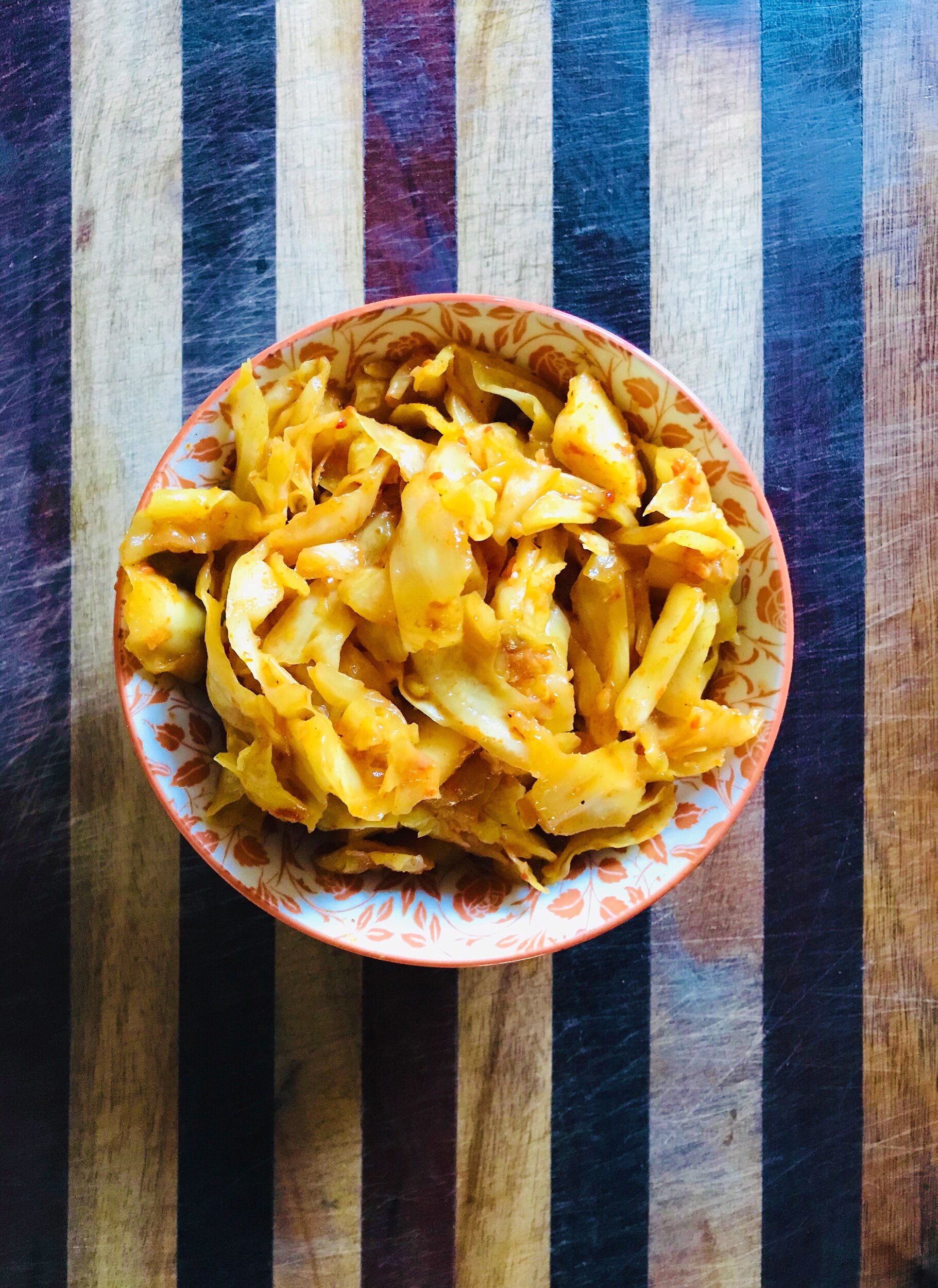Kimchi

Have you ever heard of Kimchi and thought, well, what do I make with that?
This was me two years ago and then I tasted it. It’s basically fermented cabbage, very similar to the German sauerkraut, but with a Korean influence and flavor.
There’s ginger, garlic, chilies and spice and it’s incredibly tasty with noodles and my favorite, in a toasted cheese sandwich.
In the past couple of months I’ve been shocked at the prices for Kimchi in stores so I started making my own. I didn’t use Korean spices though, I used pickled masala and Kirosha Kamal’s KK brand chili spice. If you’ve never heard of Kamal and you love authentic Indian food, she owns a blog called Kirosha’s Kitchen - check it out.
This recipe can be made vegan, by using vegan fish paste but I didn’t want. to.
Did you know: Kimchi is a fantastic source of probiotics. It boosts your immune system and aids digestion, lowers cholesterol and regulates blood sugar.
Ingredients
1 cabbage head, chopped up
1/4 cup fine salt
2 sachets of concentrated fish sauce (I used the Woolies brand)(You can substitute this ingredient with soy sauce)
4-6 tbsp pickle masala/red chili flakes
chili powder, according to your taste
1 tsp sugar (I used brown sugar)
garlic, 4-5 cloves
2 tbsp ginger, grated
Method
Peel the first layer of the cabbage off and keep it aside, you will use it at the end.
In a large bowl, massage 1/2 cup of fine salt into the cut cabbage and soak it in cold water for 2-3 hours. Place a saucer or plate on the cabbage to keep it submerged.
In a food processor, mix fish sauce, ginger, garlic, chili powder and chili flakes into a paste. You can substitute the fish sauce for miso or soy sauce. All work fine and taste amazing.
Drain cabbage but don’t rinse it.
Massage paste well into the cabbage.
In sterilized mason jars, pack cabbage very tightly. Press down and let the brine rise a little but don’t fill the jar completely. Pour enough brine over the cabbage to submerge it completely. This is a very important step.
Use a bit of the first cabbage leaf to seal the top of the jar and close. Not too tightly.
Place in a cool, shady area, on a tray to cater for overflow. After three days, tap the bottle and if you see bubbles, it is fermenting. Pop open to enjoy your kimchi but store it in the fridge afterwards.
Your Kimchi’s flavor will develop and deepen even more in the coming weeks and can last for up to two months in the fridge.






